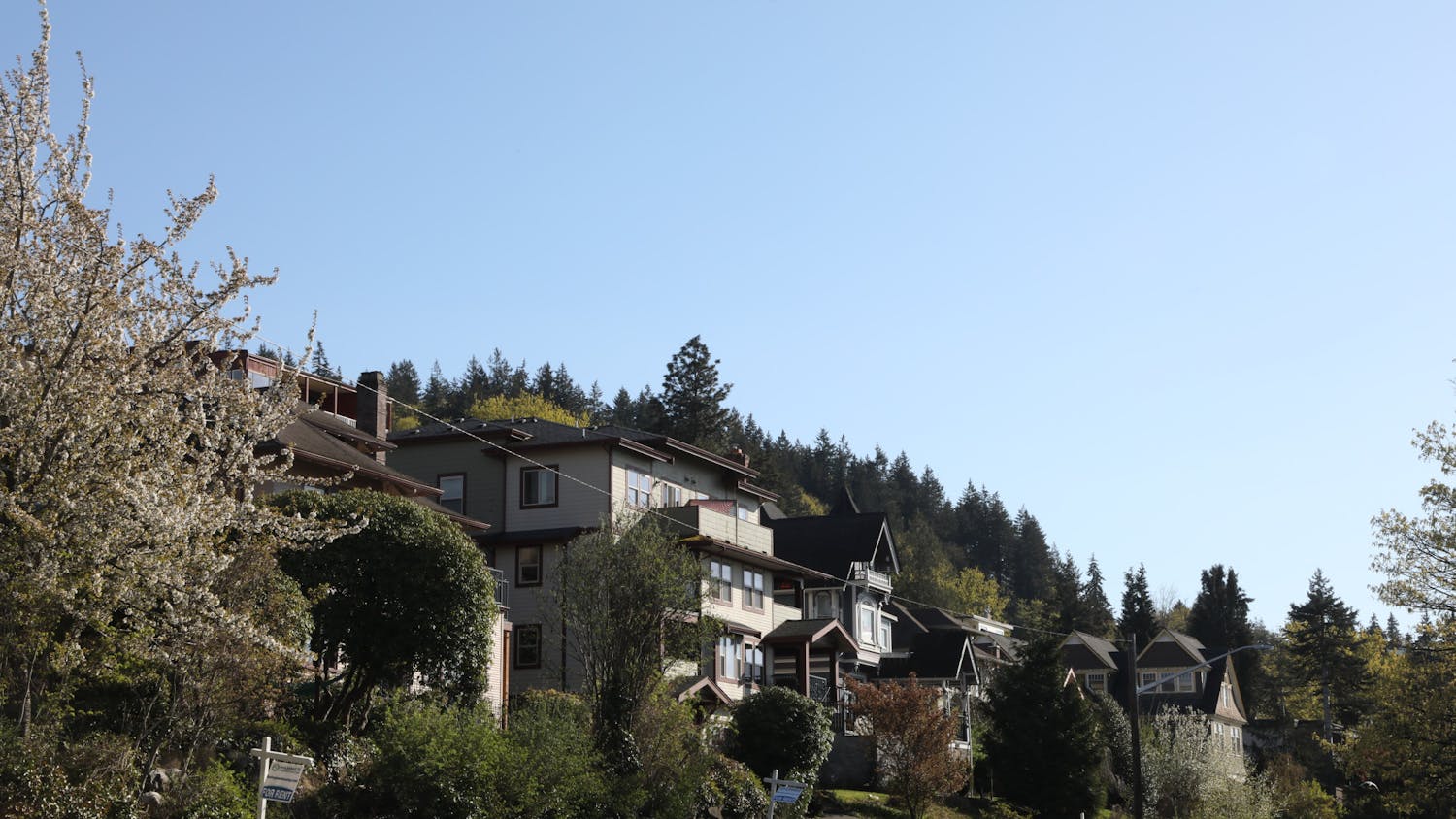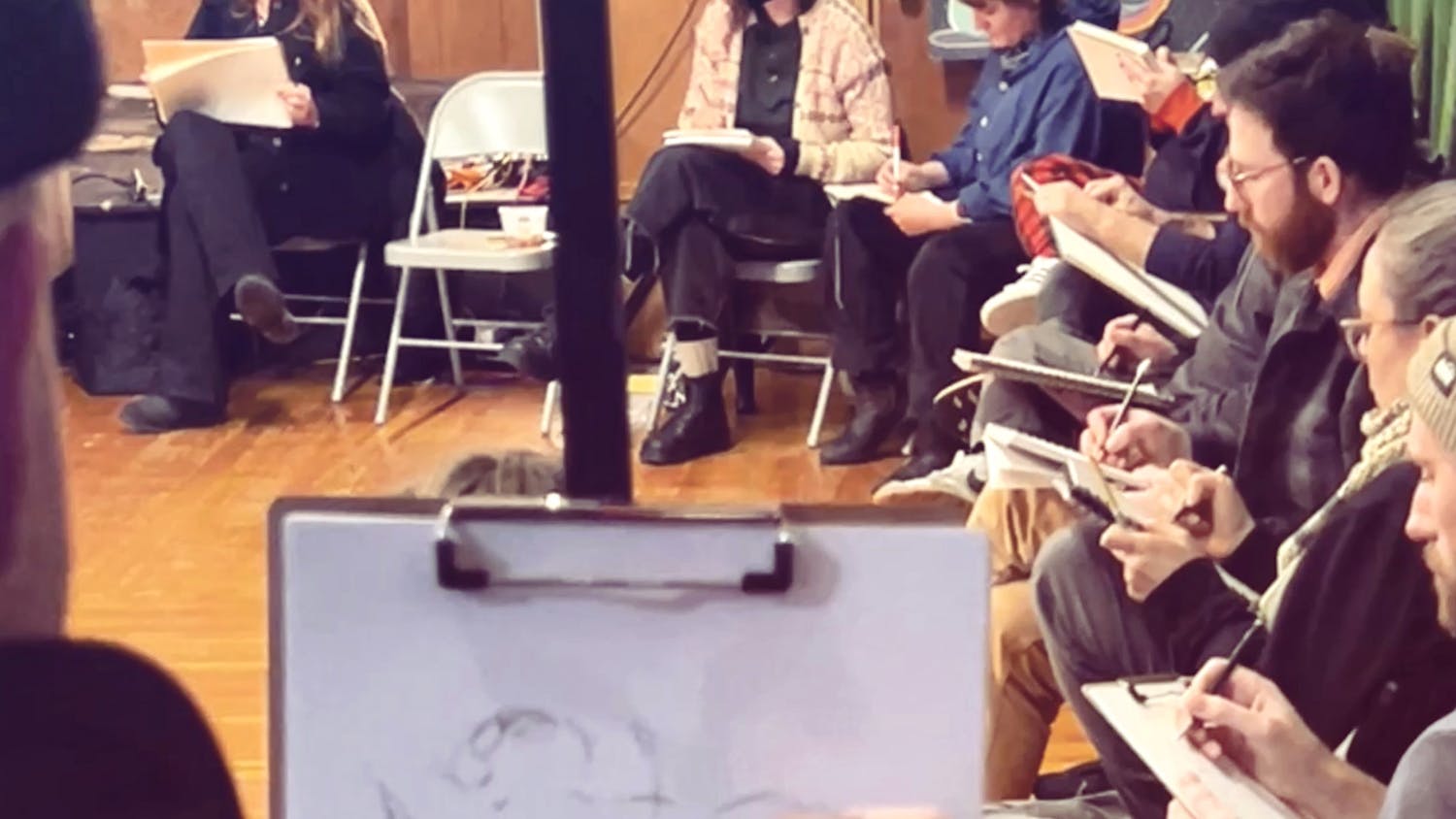
Over 2000 traps located around the county aim to eradicate this invasive species.
By Nick Baca
The Washington State Department of Agriculture attached a tracker to an Asian giant hornet in a failed attempt to locate its hive earlier this October in northern Whatcom County.
With the trapping season coming to an end due to the hornet’s life cycle, opportunities to capture, record and become aware of these deadly bugs are slim and important, said Amy Brown, volunteer coordinator for Bellingham Parks and Recreation.
The WSDA, along with other organizations within Whatcom County, mobilized trapping squads to aid in the eradication of Asian giant hornets on U.S. soil, Brown said.
“I predict that this is going to continue and be an issue next year,” Brown said. “Starting in spring of 2021, I think that there will be bigger calls for volunteer trappers.”
Leo Bodensteiner, a professor at Western and volunteer trapper, hikes five days a week up Galbraith Mountain to check his trap.
“Where I go hiking, there couldn’t be more flowers, and something that attracts Asian giant hornets is other pollinators, the things they eat,” Bodensteiner said. “So that’s where I put my trap.”
Of the over 2000 traps in Whatcom County, Bodensteiner proudly manages trap number 1516. He sends pictures and samples to WSDA every time a pollinator — hornet, wasp or bee — flies into his trap.
State and local departments equip volunteers like Bodensteiner through coordinators like Brown and supply them with the ingredients necessary to make the traps.
Traps consist of equal parts cooking rice wine and no-pulp orange juice combined in a plastic bottle with slits cut on all sides, Brown said. The WSDA has a video on YouTube detailing how to build an Asian giant hornet trap.
Brown is just one coordinator of many that took action. Ruth Danielsen, a member of the Mt. Baker Beekeepers Association, was another.
Volunteers lined up behind Danielsen’s truck as she handed out supplies given to her by the WSDA — in a socially distanced manner — in early July. She set up seven traps herself and caught the first Asian giant hornet in Washington.
“We have a lot [of bottle traps], but if you look where they are plotted, there is still a lot of space with no traps,” Danielsen said.
With these empty spaces scattered around the county, reporting these hornets and preparing for the next trapping season is key, Danielsen said.
The way Asian giant hornets decimate honeybee hives have put this predator in the spotlight as the need for their removal increases, Brown said.
The hornets kill adult bees to get to the larva which they feed upon, said Ted McFall, master beekeeper and owner of McFall Beeyard.
McFall joined Danielsen’s trapping efforts when he found decapitated bees littered around one of his colonies. The culprit: an Asian giant hornet.
“Trapping these bugs is really a question of food security as we are already facing issues with honeybee populations,” Brown said.
McFall delivers bees to farms and orchards where they are used for pollination. “Anyone who eats food should be concerned about Asian giant hornets,” McFall said. “The best fighting chance we have is public awareness and trapping at the right times.”
If bee populations decline, the prices of McFall’s pollination services will rise. Farmers also may be unable to find such services, all of which could create food shortages, McFall said.
“Whenever we have a colony loss it’s kind of like burning down someone’s business, or at least part of it,” McFall said.
Those looking to learn more, volunteer for the upcoming 2021 trapping season or other volunteer opportunities can learn more by contacting Amy Brown or the WSDA.
https://agr.wa.gov/hornets





